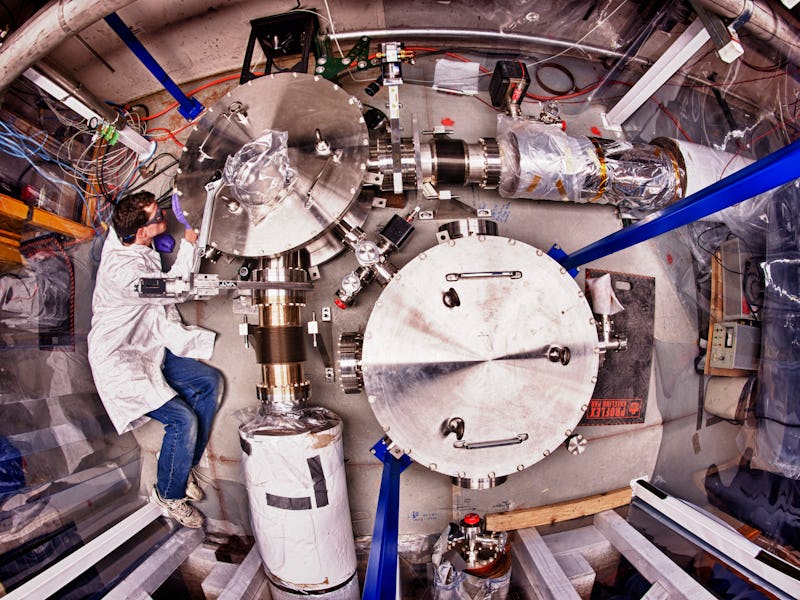Fermilab Has Reason to Suspect We Don't Live in a Holographic Universe
Physics takes a break from blowing your mind.

The science blogosphere, skinny from all those climate change studies, periodically binges on the results of theoretical physics experiments that undermine our native understandings of the universe. There was the delayed choice quantum eraser experiment that seemed to show that future events can cause past ones and the quantum entanglement experiments showing that distant particles can affect one another simultaneously — something Einstein famously referred to as “spooky action at a distance.”
The latest major finding is the opposite of mindblowing. It takes cerebellums exploded by the suggestion that our entire universe is a hologram and carefully pieces them back together.
Scientists at Fermilab tell us that an experiment designed to test the so-called “holographic principle” found no evidence that the universe is an illusory 3D projection of information encoded at the distant edges of the universe.
The “holographic principle” is a conjecture in physics that says all the information in a volume can be thought of as encoded on the edges of the space. This is “holographic” in the sense that this is kind of how holograms work; holograms record a three-dimensional image in a two-dimensional space. If the holographic principle were true, then the three spatial dimensions we take for granted could be reduced to two. The most widely touted consequence of the principle is that it would make space “digital,” composed of space “pixels” with a minimum size.
It’s worth emphasizing right here, that though the holographic principle gets a lot of air time — probably because it seems so screwy — it is by no means mainstream. As Sabine Hossenfelder, a critic of the holographic principle, put it on her blog back in 2012, “The idea that space may be digital is a fringe idea of a fringe idea of a speculative subfield of a subfield.”
Fermilab’s Holometer (that’s “holographic interferometer”) was dreamt up by physicist Craig Hogan. Hogan hypothesized that in a holographic universe, space itself would exhibit quantum “jitter.” This jitter would be quite small — Hogan expected it to occur on the level of the Planck length, or 0.000000000000000000000000000000000001616 meters, which you should know is considerably smaller than the diameter of a proton. To test his theory, Hogan’s team built a pair of nested interferometers, L-shaped devices that can measure extremely small distances by sending beams of light down each of its two arms, bouncing them off mirrors, and comparing the two signals when they return to the elbow of the L. The quantum jitter should appear as noise in the signal.
Interferometers have a long and noble pedigree in the history of physics. Michelson and Morley used them to rule out the existence of the ether. The long-running LIGO experiment uses an interferometer with arms 4 kilometers long to search for gravity waves. So, though it ruled out his theory, Hogan’s Holometer could be the first example of a new generation of interferometers able to probe ever smaller spaces.
These amazing pieces of equipment may one day produce research that alters our fundamental understanding of the universe. But today is not that day.